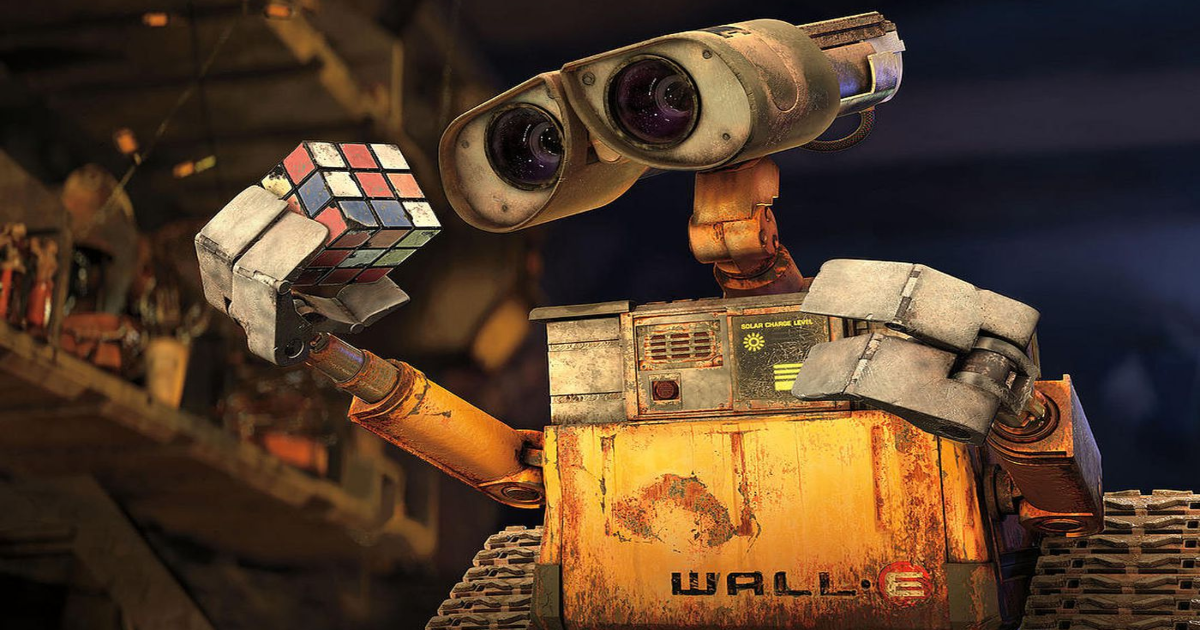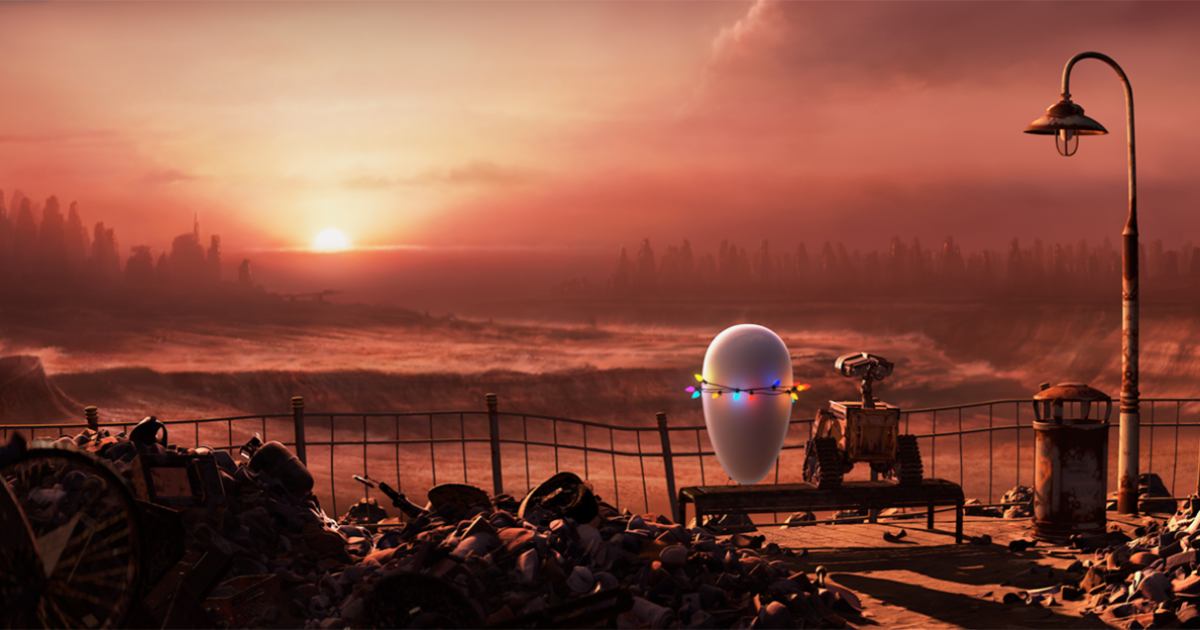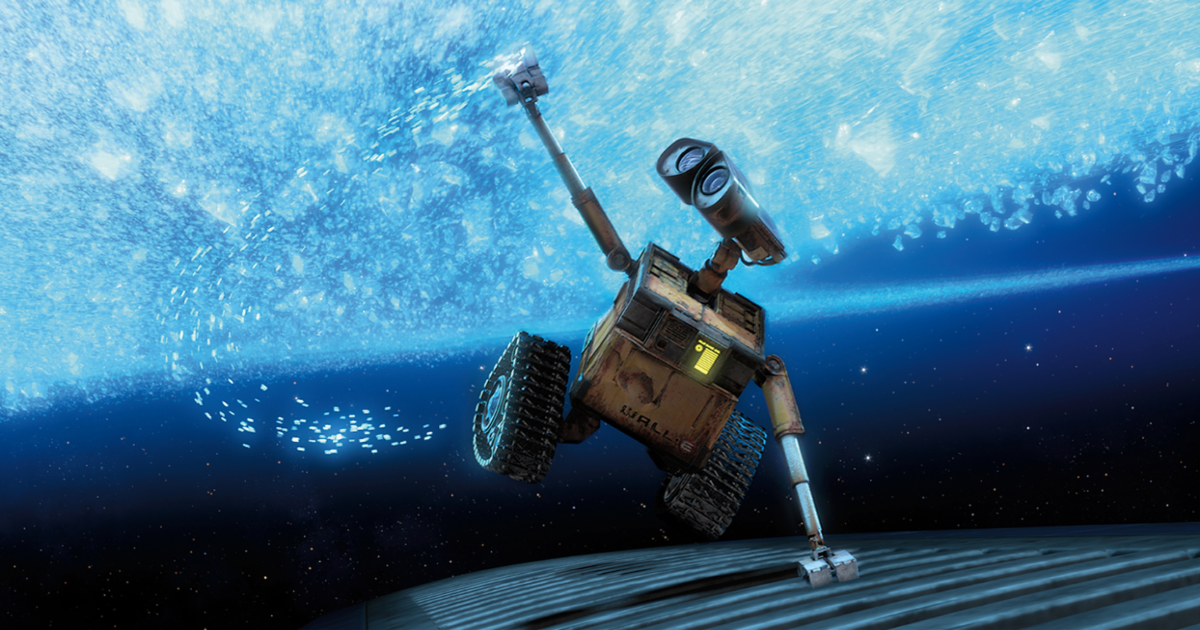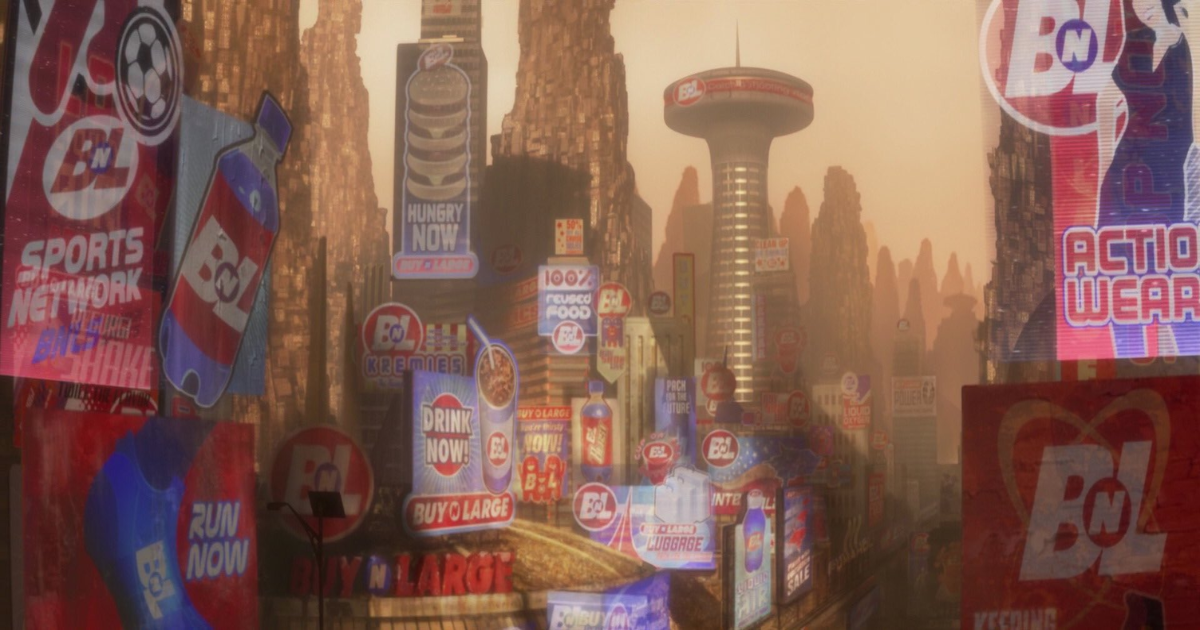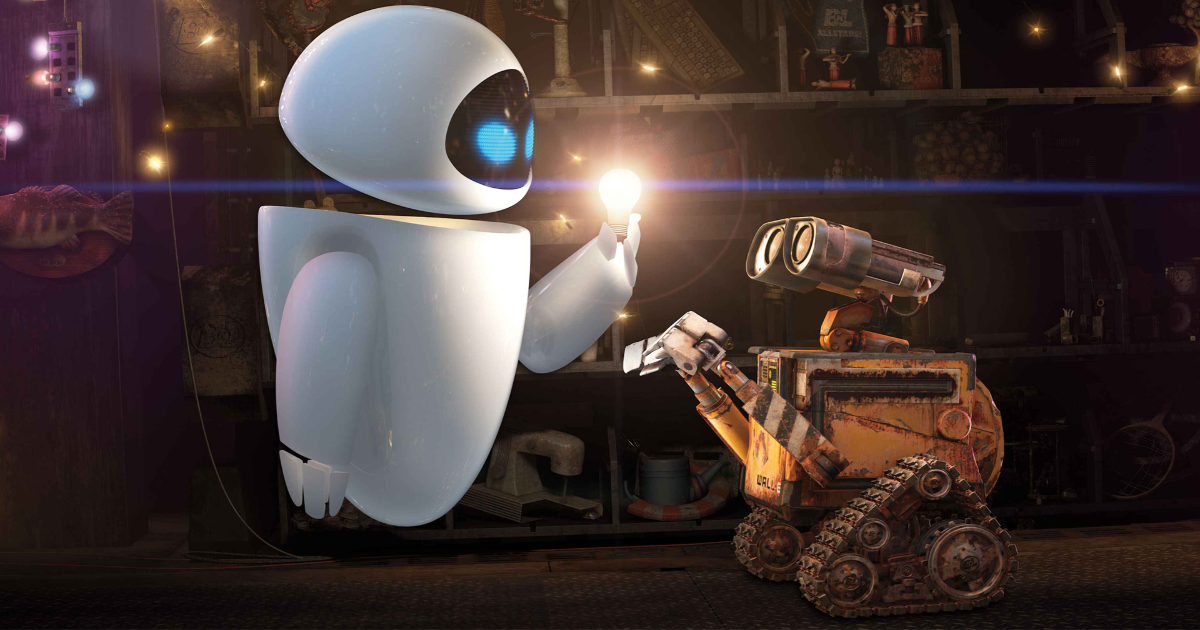Having produced 26 feature films over the last 27 years, Pixar Animation is without a doubt one of the most dominant animation studios in the world. From Toy Story to Monsters Inc., and Inside Out to Turning Red, so many of the most widely acclaimed and beloved animated movies of the last thirty years have come from Pixar. With that many films under their belt, there are bound to be a few that rise above the rest, even if they are all various degrees of excellent.
Though many of the studio’s most acclaimed movies come from their first decade of feature filmmaking, Pixar’s ninth film, WALL·E, released in 2008, is one that often gets lost in the crowd. While the film certainly does have its fans, the love for the movie consistently falls short of heavier hitters like The Incredibles or Finding Nemo. Despite its lower prominence in Pixar’s overall filmography, WALL·E is a film that deserves to be remembered as one of Pixar’s greatest.
Old School Storytelling
From the moment the film starts, WALL·E does an incredible job of differentiating itself from the rest of the Pixar pack. As a movie it is less akin to the likes of Ratatouille and Cars than it is to Pixar’s early animated shorts, such as Luxo Jr., Tin Toy or Knick Knack. This is because of the film’s old-school personality, which comes from the fact that its central rusty robot doesn’t speak much beyond saying his name. As a character, WALL·E communicates almost exclusively through physical actions and various expressive robotic sounds. This forces the film to rely mainly on visual storytelling rather than exposition or even dialogue. The result is that many of WALL·E’s early sequences are teeming with physical and visual humor, much more than the other Pixar films that preceded it.
Even with the introduction of EVE, who has more extensive vocal abilities than WALL·E, the film still relies heavily on this kind of storytelling. It verges on the aesthetics of a silent comedy of the early 20th century. The story of the film is so well established through visual communication that one could still follow much of the plot of WALL·E if they were to mute the movie entirely. Though, that would remove the wonderfully expressive musical score from Thomas Newman, so don’t actually do that.
Beautiful Animation
At this point, nobody is surprised when a Pixar movie looks beautiful. It's what they do, and honestly, it would probably be a bigger shock if Pixar released a movie that looked just okay. With that said, WALL·E presents some of Pixar's finest work. It was the first time the studio had delved into the genre of science fiction, and as a result, Pixar got to apply its wonderful animation skills to the vastness of space. For arguably the first time, it allowed Pixar to bring a sense of grand scale to their films. The animation team got to really use their collective imagination as they brought to life the wonder and immensity of outer space. The sequence of WALL·E and EVE flying and dancing through space about halfway through the film is some of the most visually arresting work that Pixar has done to date.
Not all the beauty in WALL·E's animation comes from the inclusion of space, though. The film features some of the best cinematography that can be found in Pixar's entire filmography. Through their digital camerawork and lighting, Jeremy Lasky and Danielle Feinberg really elevated WALL·E to something beyond just a charming space story. The team also had a massive assist from the legendary cinematographer Roger Deakins, who worked as a visual consultant on the film. The environments created for this film don't feel like those of an animated film. They felt like they really existed and were lived in. The film has a vibrant but realistic use of color, which makes its different locations feel worlds away from each other. Whether it's the clean, sleek and futuristic feel of the spaceships or the sepia-toned and rustic atmosphere of an Earth ravaged by pollution, the world of WALL·E is one that doesn't feel too far off from the one we know.
Impactful Messages
Pixar has always been known for including strong thematic material in their films, which is one of the aspects that really sets them apart from their competition. WALL·E is no exception. The film might be one of Pixar's most unapologetically progressive, as its focus on environmentalism, corporate greed, and consumerism is front and center from beginning to end. Despite the fun adventure at the base of its story, WALL·E is also a dreary cautionary tale of what could become of humanity if it continues on its current trajectory. The film is set in the 29th century and much of its plot centers around humanity trying to go back to the way things used to be. As a result of immense pollution and an utter failure to clean up the mess, Earth is rendered uninhabitable, which forces humanity to migrate into space.
However, it's with the idea of humanity's migration that another central theme of the film comes into play, and that's complacency. Instead of finding a new home on a new planet, the human race in WALL·E instead got too comfortable and basically spent the next 700 years living aboard the interstellar luxury cruise, the Axiom. Beyond that, there's also the characterization of the massive corporation Buy-N-Large. In the years leading up to humanity abandoning Earth, the massive company had taken over every aspect of human existence, from food to transportation and even all of Earth's governments. Buy-N-Large's monopoly on literally everything has continued in the centuries since. Everyone aboard the Axiom just consumes whatever Buy-N-Large produces for them and doesn't put any further thought into it. With massive companies such as Amazon, and ironically, Disney, seeping into seemingly every aspect of modern life, WALL·E's decision to depict Buy-N-Large as the villain of the story is one that is aging like a fine wine.
It’s Just Plain Fun
As depressing as the thematic material of WALL·E can be, there's no denying that the movie ultimately works as well as it does because it's just so much fun to watch. The characters of WALL·E and EVE are both relentlessly charming, and the love story between them is one of the most wholesome and genuine romances that Pixar has produced. It's the kind of love story that even a cynic can enjoy. Though WALL·E has such intense thematic material regarding humanity and Earth's future, the central story of the film is ultimately about its two main characters falling in love. Everything else is just background noise. Watching WALL·E and EVE go about their adventure while falling in love is immensely entertaining because they are both such likable characters and the audience is rooting for them the whole time.
WALL·E is also a genuinely funny movie in just about every moment it can be. There's a lot of humor to be found at the beginning of the film as WALL·E attempts to clean up humanity's mess with no one but his cockroach buddy Hal to keep him company. Then there are also a ton of fun sequences aboard the AXIOM as well. Jeff Garlin does an excellent job at voicing the lovable Captain of the ship who is in awe as he rediscovers what humanity used to be, and the various other robots on the ship also bring new layers of personality and hilarity to the movie. With WALL·E, Pete Doctor and director Andrew Stanton were able to balance mature ideas with childhood wonder, and the result is a movie that is a perfect example of what makes Pixar great.

